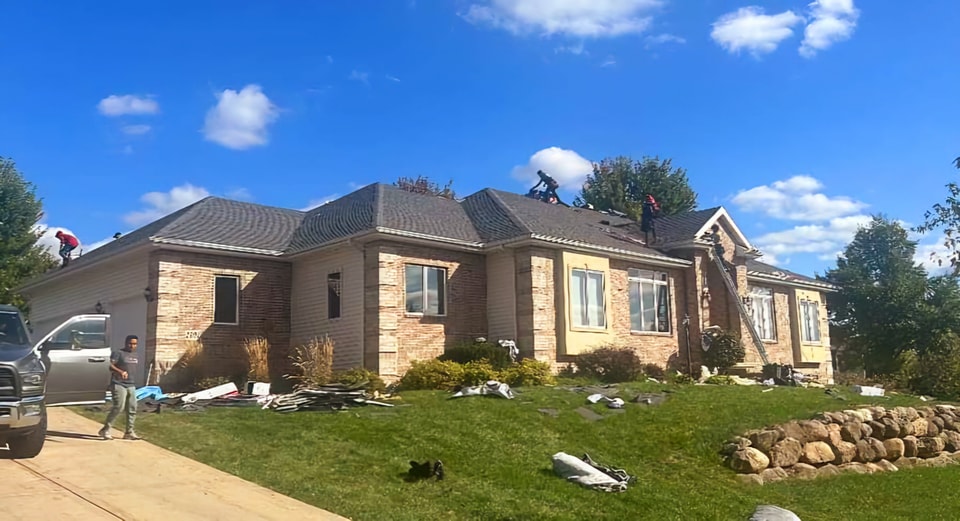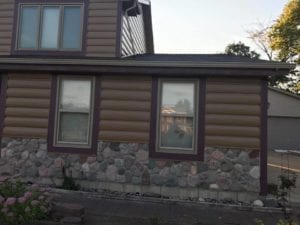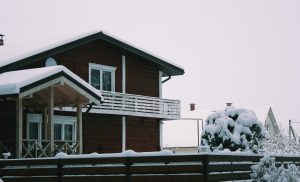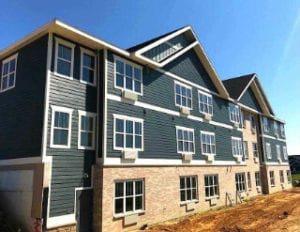When planning a window replacement or remodel, it’s easy to focus on frame type or insulation value. But there’s another factor that plays a big role in how your windows perform: which direction they face. That one detail affects everything from natural lighting and energy bills to how much you’ll sweat in your living room on a July afternoon.
Homeowners in Wisconsin often ask: Does it really matter if my windows face north or south? And the answer is yes, especially with our seasonal temperature swings. This guide breaks down how orientation impacts each side of your home and how to make smarter choices based on sun exposure, privacy, and heating/cooling loads.
At Heins Contracting, we’ve installed windows in everything from century-old homes in Monroe to new builds in Madison. Let’s walk through what we’ve learned.
The same window performs differently depending on the direction
We’ve installed identical double-pane windows on opposite sides of a house, one facing north, one south, and the difference in performance was noticeable within days. Heat gain, glare, condensation, and fading vary drastically depending on the sun angle.
A high-performing window won’t do much if it’s battling the wrong kind of exposure. South-facing windows need heat control. North-facing ones need insulation.
Warning: Homeowners often underestimate how much west-facing windows heat up a room in the afternoon. Without the right specs, that side of the house becomes a hotspot, and not in a good way.
North-facing windows: Low light, low gain but not low risk
Thermal loss and why insulation matters here
North-facing windows receive almost no direct sun. That’s great for reducing fading and summer overheating, but in winter, it means they’re constantly exposed to cold air.
- Less solar gain = more heating needed indoors
- More condensation risk due to cooler surface temperatures
- Ideal for spaces like garages or utility rooms, not main living areas unless upgraded
Pro tip: Focus on low U-factor windows (≤ 0.30) and proper weather-sealing. Foam insulation around frames is a must.
Note: North-facing rooms often feel colder, even if the thermostat is balanced. Better glazing helps stabilize indoor comfort across the house.
South-facing windows: Bright, warm, and energy efficient with caveats
Making the most of winter sun while keeping cool in summer
This side gets the most consistent daylight year-round, especially during cold months when the sun sits lower in the sky. Properly installed windows on this side can actually reduce your heating load.
- Large south-facing windows can improve energy efficiency if designed correctly
- Watch out for summer overheating if there’s no shade or overhang
- Pairing with light-filtering shades or overhangs works well
Reality check: South-facing windows should balance SHGC (solar heat gain coefficient) between 0.35–0.45. That allows winter warmth without roasting in August.
West-facing windows: Afternoon heat and glare troublemakers
This side causes more cooling complaints than any other
West-facing windows get hit with low-angle sun late in the day, just when most people are trying to relax after work. That means glare on TVs, overheated bedrooms, and overloaded AC systems.
- Summer sun can drive indoor temps up by 5–10°F
- Window films and exterior shading help, but won’t solve poor glazing
- Best paired with low SHGC ratings (≤ 0.30) and tinted or coated glass
Warning: Don’t rely on blinds alone, they block light but trap heat inside the room. Use performance glass instead.
Pro tip: Casement or awning-style windows work well on the west side. They can be cracked open for airflow without pulling in too much sun.
East-facing windows: Soft morning light, not much heat gain
A nice balance for bedrooms and kitchens
East-facing windows get direct sun in the morning but stay cool the rest of the day. That’s usually a good thing, natural wake-up light without the heat load.
- Great for areas where you want early light but stable temps
- Less risk of fading, overheating, or condensation
- Focus on balanced performance glass with moderate U-factor and SHGC
Note: These windows often don’t need the same level of thermal tuning as north/south ones. Prioritize daylighting benefits here.
Costs, materials, and what to expect when choosing based on orientation
Making smarter decisions before you install
You don’t need different brands of windows for each side of your home, but you do need to pick the right glass package and framing material based on orientation.
Here’s a general breakdown of upgrade costs in 2024–2025:
- Basic double-pane vinyl window (U 0.35 / SHGC 0.40): $600–$850
- Low SHGC glass upgrade for west-facing units: +$120–$200 per window
- Triple-pane with low U-factor for north-facing sides: $1,000–$1,400 installed
Reality check: Not every room needs the most expensive option. Prioritize key comfort areas like living rooms and bedrooms. Secondary spaces can go with standard specs.
Expert insight: What we recommend after 400+ installs
In homes across southern Wisconsin, we’ve found this general layout works best:
- North side: Triple-pane, low U-factor, strong sealing
- South side: Moderate SHGC, standard double-pane or triple-pane with sunlight control
- West side: Tinted or low SHGC glass, well-insulated frames, good ventilation options
- East side: Balanced glazing with daylight priority
“We always tailor the window spec to the room use and wall direction,” says Mark, one of our lead installers in Mount Horeb. “One-size-fits-all doesn’t hold up when you’ve got ice buildup on the north and glare in the west.”
FAQ: Window direction and energy savings
Which direction loses the most heat?
North-facing windows tend to lose the most heat in winter due to constant shade and exposure to cold winds. That’s why U-factor matters more than SHGC on that side.
Should I choose different windows for each side of my house?
Yes, but not entirely different models. Use the same brand or series, but choose different glass packages or frame types based on direction.
Does window orientation impact energy bills?
Absolutely. A well-balanced layout can reduce both heating and cooling loads, especially if south-facing windows collect winter sun and west-facing windows block summer heat.
What if I don’t want tinted glass?
Look for low-e coatings that reduce solar gain without darkening the glass. They offer a clear view while still blocking heat.
Get more out of your windows by facing the facts
Every home has hot spots and cold zones. Most of them tie directly back to where your windows face, and whether the specs match what the Wisconsin climate throws at them.
If you’re unsure how your current layout affects your energy use, we at Heins Contracting can take a closer look. We’ve replaced windows in farmhouses, split-levels, and townhomes across Dane and Green Counties, always with regional conditions in mind.
Window orientation isn’t something to fix after the fact. A bit of planning now saves you discomfort and wasted energy down the road.




